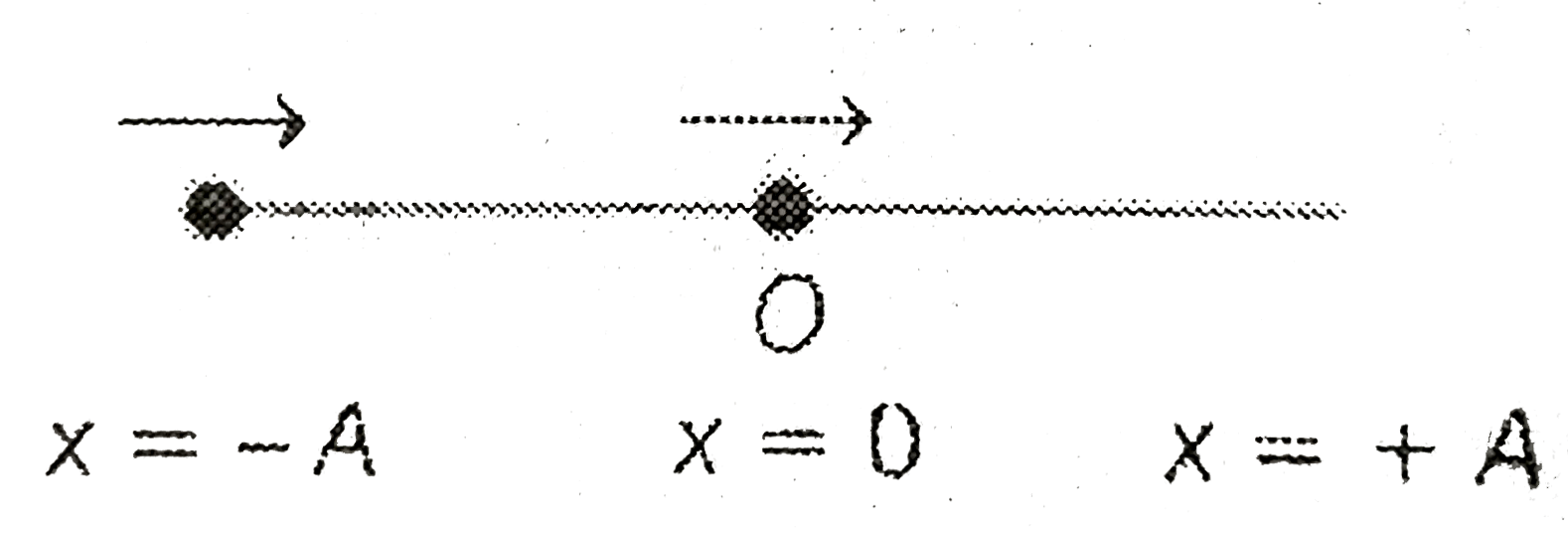Two particles undergo SHM along the same line with the same time period (T) and equal amplitudes (A). At a particular instant one particle is at x=-A and the other is at x=0. They move in the same direction. They will cross each other at

only i, iii are correct
only i, iv are correct
only ii, iii are correct
only ii, iv are correct
The correct Answer is:D
Step by step video solution for Two particles undergo SHM along the same line with the same time period (T) and equal amplitudes (A). At a particular instant one particle is at x=-A and the other is at x=0. They move in the same direction. They will cross each other at by Physics experts to help you in doubts & scoring excellent marks in Class 11 exams.
Updated on:21/07/2023Similar Questions
Two particles undergo SHM along the same line with the same time period (T) and equal amplitude (A). At a particular instant one is at x=−A and the other is at x=0. If they start moving in the same direction then they will cross each other at

(i) t=4T3 (ii) t=3T8 (iii) x=A2 (iv) x=A√2
View SolutionTwo particles undergo SHM along parallel lines with the same time period (T) and equal amplitudes. At particular instant, one particle is at its extreme position while the other is at its mean position. The move in the same direction. They will cross each other after a further time.
View SolutionTwo particles are in SHM with same amplitude A and same regualr frequency ω. At time t=0, one is at x =+A2 and the other is at x=−A2. Both are moving in the same direction.
View SolutionA: The phase difference between the two particles shown below is π. (Assuming both particles have same time periods and same amplitudes).

R: If the particles cross each other while they move in the opposite direction, they have a phase difference of π radian.
View SolutionTwo particles are executing SHM in a straight line. Amplitude A and the time period T of both the particles are equal. At time t=0, one particle is at displacement x1=+A and the other x2=(−A2) and they are approaching towards each other. After what time they across each other? T4
View SolutionA particle performs SHM on a straight line with time period T and amplitudeA. The average speed of the particle between two successive instants, when potential energy and kinetic energy become same is
View SolutionTwo streams of electrons are moving parallel to each other in the same direction. They
View SolutionTwo particles are in SHM along same line with same amplitude A and same time period T. At time t=0, particle 1 is at + A2 and moving towards positive x-axis. At the same time particle 2 is at −A2 and moving towards negative x-axis. Find the timewhen they will collide.
View SolutionTwo particles are performing SHM with same amplitude and time period. At an instant two particles are having velocity 1m/s but one is on the right and the other is on left of their mean positiion. When the particles have same position there speed is √3m/s. Find the maximum speed (in m/s) of particles during SHM.
View SolutionAssertion : A particle is under SHM along the x - axis. Its mean position is x=2, amplitude is A=2 and angular frequency ω. At t=0, particle is at origin, then x - co-ordinate versus time equation of the particle will be x=−2cosωt+2.
Reason : At t=0 , particle is at rest.
View Solution
